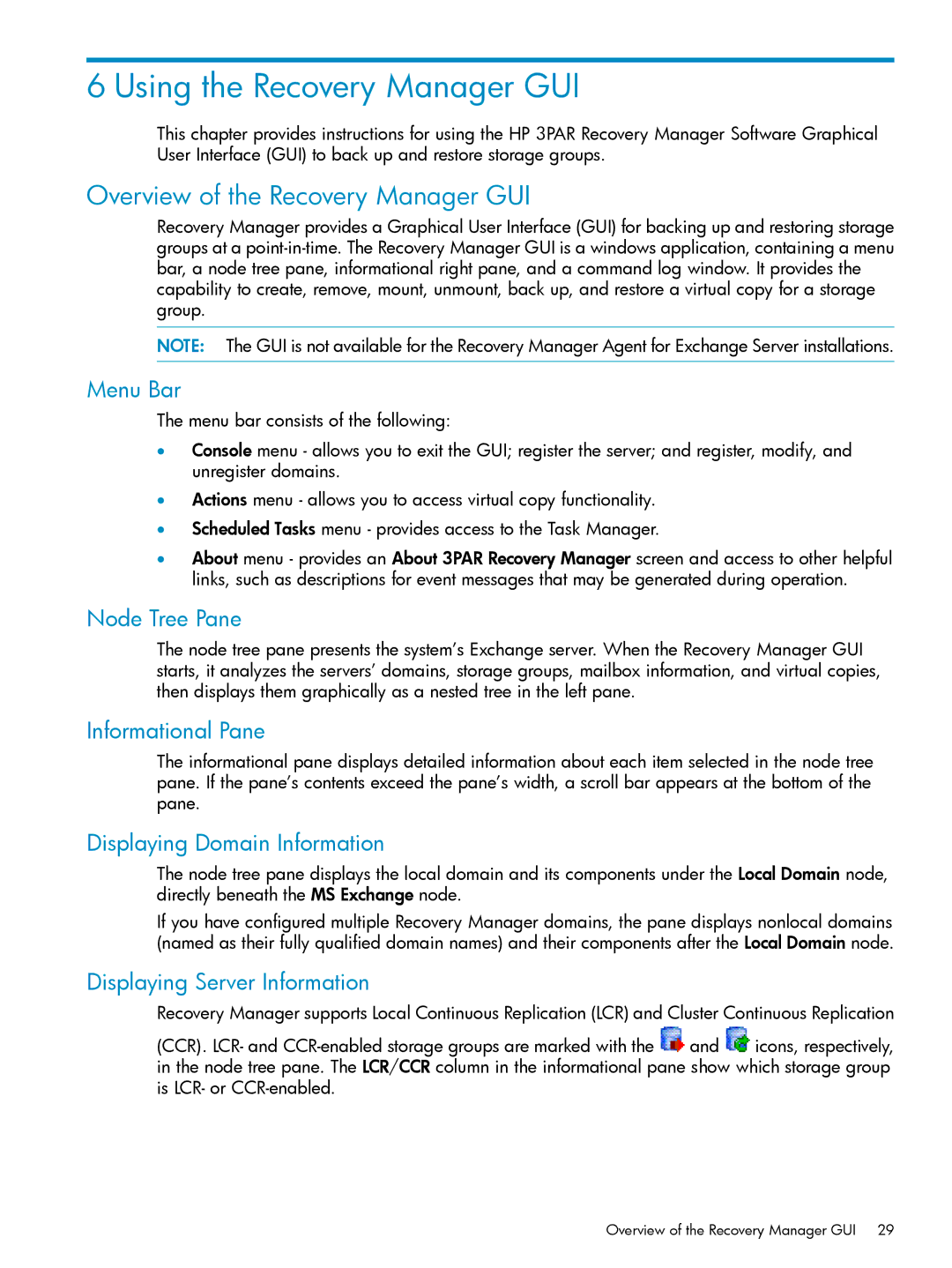
6 Using the Recovery Manager GUI
This chapter provides instructions for using the HP 3PAR Recovery Manager Software Graphical User Interface (GUI) to back up and restore storage groups.
Overview of the Recovery Manager GUI
Recovery Manager provides a Graphical User Interface (GUI) for backing up and restoring storage groups at a
NOTE: The GUI is not available for the Recovery Manager Agent for Exchange Server installations.
Menu Bar
The menu bar consists of the following:
•Console menu - allows you to exit the GUI; register the server; and register, modify, and unregister domains.
•Actions menu - allows you to access virtual copy functionality.
•Scheduled Tasks menu - provides access to the Task Manager.
•About menu - provides an About 3PAR Recovery Manager screen and access to other helpful links, such as descriptions for event messages that may be generated during operation.
Node Tree Pane
The node tree pane presents the system’s Exchange server. When the Recovery Manager GUI starts, it analyzes the servers’ domains, storage groups, mailbox information, and virtual copies, then displays them graphically as a nested tree in the left pane.
Informational Pane
The informational pane displays detailed information about each item selected in the node tree pane. If the pane’s contents exceed the pane’s width, a scroll bar appears at the bottom of the pane.
Displaying Domain Information
The node tree pane displays the local domain and its components under the Local Domain node, directly beneath the MS Exchange node.
If you have configured multiple Recovery Manager domains, the pane displays nonlocal domains (named as their fully qualified domain names) and their components after the Local Domain node.
Displaying Server Information
Recovery Manager supports Local Continuous Replication (LCR) and Cluster Continuous Replication
(CCR). LCR- and ![]() and
and ![]() icons, respectively, in the node tree pane. The LCR/CCR column in the informational pane show which storage group is LCR- or
icons, respectively, in the node tree pane. The LCR/CCR column in the informational pane show which storage group is LCR- or
Overview of the Recovery Manager GUI 29
